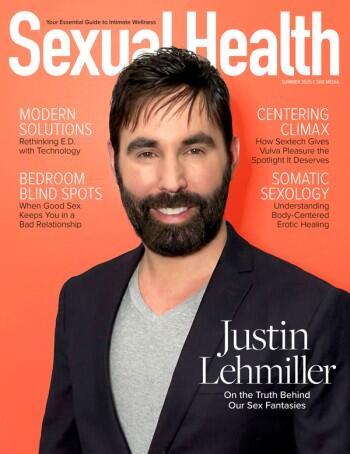A few months back, some very well publicized research came out that claimed that the G-spot doesn’t exist. It was the latest round in the seemingly never-ending debate about the existence of the G-spot that medical folks, sexologists, and other scientists have been having ever since the publication of “The G Spot and Other Recent Discoveries About Human Sexuality” in 1982. When these kinds of reports come out, the sex retail trade has an opportunity to educate customers.
I probably need to make something clear. I’m a big fan of sexual science and research. The more we understand about sex, pleasure, and relationships, the more tools we can develop to create amazing sex lives. I regularly use information I’ve read in the scientific literature to reassure my clients, and I know that many of you do, too. For example, when you tell a customer that as many as 70 percent of women need clitoral stimulation in order to reliably orgasm, or when you tell someone that blood pressure medications can cause erection difficulties because of their effect on the arteries in the penis, you’re sharing sexual scientific information with them.
I regularly use information I’ve read in the scientific literature to reassure my clients, and I know that many of you do, too.
But what happens when the science is unclear? Or when it’s simply bad science? What do we do when experiments are badly designed or when the information is badly reported? I saw that happen with the recent media frenzy about the G-spot. There were lots of articles with click-bait headlines, and very little analysis of the limits and flaws of the research. Given how few people know how to read and interpret scientific papers, that’s not surprising. But I’ve fielded several questions from people wondering just what’s going on for them when they seem to enjoy G-spot pleasure and the media is announcing that it doesn’t exist. They were worried that something was wrong with them, since “science says that the G-spot isn’t real.”
That’s a problem because there’s so much misinformation, ignorance, and shame that limit peoples’ sex lives, especially when it comes to women’s pleasure. And when every major media outlet is announcing that the G-spot doesn’t exist and that G-spot ejaculate is urine, that’s going to make it even harder for women and their partners to experiment and discover this erogenous zone. When it comes to understanding sexual science, I think there’s a lot of room for us to talk about the limits of a given study, or the flaws in their procedures, or how the biases of the researchers might have shaped their results. But when you’re talking with a customer, there probably isn’t much time for that. That’s when you need to set the research and the hype aside, and talk about what we know.
For example, we can acknowledge that there are different explanations for why many women enjoy stimulation of an area on the front wall of the vagina. But what’s more important is knowing that whatever the anatomy of that erogenous zone is, a “come hither” stroke or a curved vibrator will usually work well. You don’t need to know how electricity is generated to turn on a light, and you don’t need to know what the G-spot is to enjoy it. When I tell people that, I almost always see them calm down because they don’t have to keep worrying about the science or the hype. They can explore their bodies and experiment with toys, and focus on what works for them without getting caught up in the question of why it does.
Similarly, when folks ask me whether G-spot ejaculation is urine, I can tell them that while we don’t know exactly what it is, most people report that it doesn’t look or taste like urine. If they’re worried about it, I can tell them that unless you have a kidney or bladder infection (and if you do, you probably aren’t having sex), urine is clean. Besides, you can put a towel or a Liberator Throe on the bed. We don’t need to know the chemistry of G-spot ejaculate to enjoy it.
It’s good for sex educators and retailers to keep up to date on the current research, since there’s always new information coming out. But it’s also important for us to know that when it comes to pleasure, the only thing that’s relevant is what works for each individual, even when science seem to conflict with that. Of course, media literacy and learning how to understand research are also useful. But as long as we remember that sexuality is diverse, and that each customer is the only authority on their sexual pleasure, that’s all we really need. No matter what the latest trend or media frenzy says.
Charlie Glickman PhD is a sexuality speaker, trainer, writer, blogger, and coach. He’s an AASECT-certified sex educator and has been working in this field for over 20 years. Charlie is the co-author of The Ultimate Guide to Prostate Pleasure: Erotic Exploration for Men and Their Partners. Find out more about him at www.charlieglickman.com or on Twitter and Facebook.







